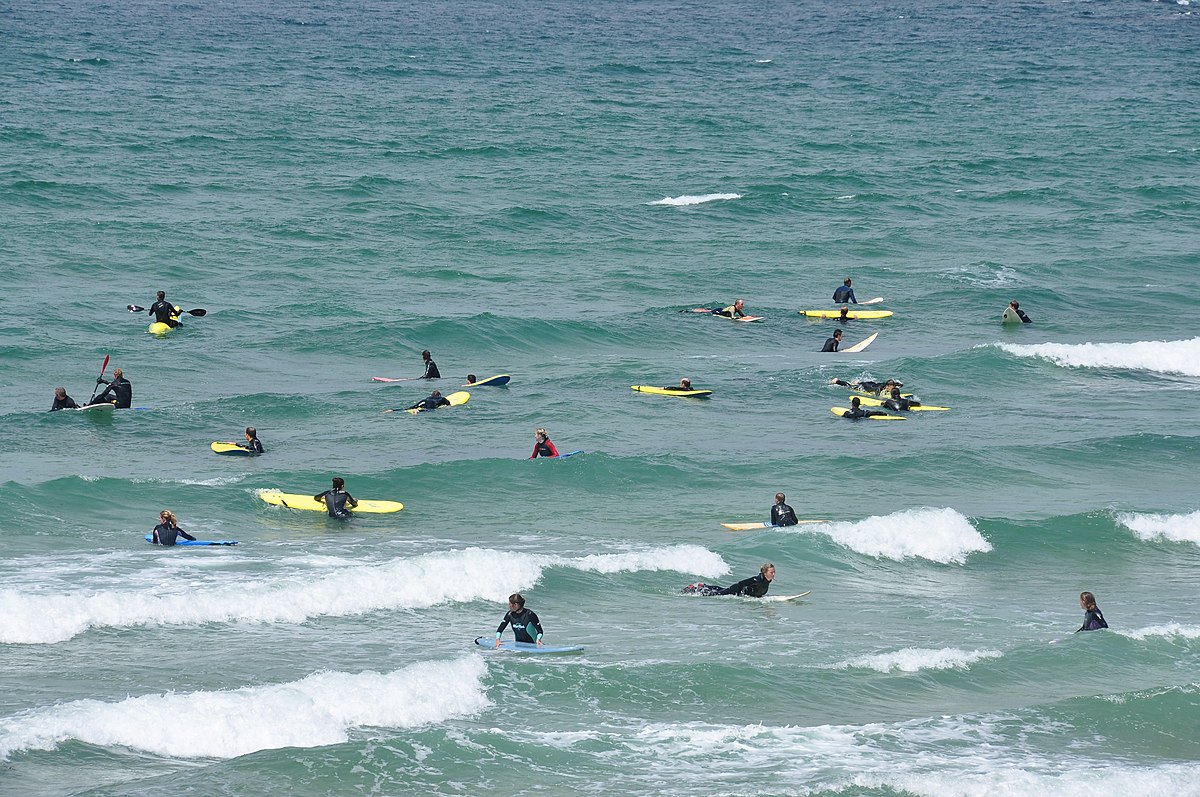Student activism has a long history, making a big difference in causes such as civil rights, anti-war protests but lately, perhaps due to the challenges we face in the area of environmental conservation, a growing number of students are speaking up and taking action. With the challenge of climate change, pollution, lack of food, and loss of biodiversity comes a growing desire for concern towards conservation of our planet. Academized custom essays can support these efforts by providing well-researched and compelling essays that articulate the importance of environmental issues. This writing service helps students create persuasive arguments and in-depth analyses that can influence public opinion and contribute to the broader environmental movement. For those looking to effectively communicate their advocacy through writing, learning more about Academized service can be a game-changer in writing impactful essays.
This article examines how student activists can play an important role in the environmental movement. An analysis of the strengths students bring to the cause will be provided, as well as a discussion of some of the issues that student activists have tackled. Also presented are examples of successful student-led environmental initiatives, with a discussion of the challenges involved. Finally, the longevity of student-driven change and how this can be made to have an impact on environmental policy and consciousness will be considered.
The Rise of Youth Environmental Activism
Youth environmental activism is hardly a new phenomenon, but the recent rise has been breathtaking to witness. No doubt there are many reasons for this surge:
- Greater awareness: Students are more likely to grow up in a world where the environment is discussed in school and the media and where climate change and other ecological problems are taken to be an urgent reality. Platforms like Instagram, TikTok and Twitter – social media – enable young activists to be found, create networks, convene and disseminate their message to a global community.
- Age-defying leaders: young people such as Greta Thunberg have inspired a generation to join the fight against climate change by highlighting the potential of one teen to make a difference.
- Sense of urgency: Most of today’s students feel that successive generations have not taken the problems of the environment seriously, and so it is for them to take the consequences. This has been accompanied by a sense of urgency and determination in many young activists.
Strengths of Student Environmental Activists
Student activists bring several unique strengths to the environmental movement:
- Energy and passion: Young people sometimes have a lot of enthusiasm and energy for causes they believe in, and they can mobilize others to get involved.
- Fresh ideas: students can solve environmental problems in entirely different ways, and come up with original solutions that older activists wouldn’t even dream of.
- Tech-savvy: Having grown up in the digital age, peers are comfortable with the latest technology and social-media platforms that enable them to organize, share information and lobby policy-makers.
- Long-term stake: Young people stand to lose the most from environmental degradation, as they are the ones who will be dealing with the consequences for far longer. This gives them a powerful incentive to compel change.
- Time and flexibility: Students often have more time than working adults to devote to activism, and potentially can integrate activism into a homework assignment or school project.
Key Environmental Issues Tackled by Student Activists
Student environmental activists tend to work on a wide range of topics, but some of the most common include:
- Climate change: Many young activists are demanding deep greenhouse gas cuts, investments in renewables, and climate-change adaptation policies.
- Plastic pollution: Younger generations have led the charge to lower the use of single-use plastics and aquatic cleanups.
- Biodiversity and habitat protection: Youth activists are fighting to protect endangered species and prevent the loss of key ecosystems such as rainforests and coral reefs.
- Sustainable agriculture: Some student organizations concentrate on promoting organic food production, limiting pesticide use and creating more sustainable food systems.
- Environmental justice: The younger activists often emphasize how questions of environmental justice and social justice are intertwined, advocating for vulnerable communities that are both socially and geographically on the frontlines of pollution and climate change.
Successful Examples of Student Environmental Activism
Here are some of the success stories of student environmental activism that take on the burden of change:
- Students For Safe Energy initiated the Sustainability Facility Rating. Their perspective is that for a green-certified building to be truly green, it has to challenge the status quo and promote justice through a holistic approach rather than opting for an individualistic mindset. Once the ideas spark, the movement becomes spontaneous.
- Unconscious Consumption, a student campaign in Singapore, focuses on providing guidance for sustainable consumption by mapping store locations with brief descriptions of the stores’ business models and their sustainability initiatives.
- The Quaker Earthcare Witness is an example of an impressive intergenerational student and teacher collaboration. They are committed to engaging socially and spiritually as well as taking action.
- The People and the Planet society is one of the many UK university student societies advocating for greener policies and practices on campus. They have been actively involved in protests during the government’s resource-digging scheme in remote parts of the UK.
And more:
- Fridays for Future: This global movement of school strikes for climate started by Greta Thunberg has brought millions of schoolchildren onto the streets and put pressure on governments to take action on the climate crisis.
- Fossil fuel divestment: By pushing many universities and other institutions to divest their endowments from fossil fuel companies, student activists have both helped to stigmatize these industries and redirected money toward cleaner options.
- Campus sustainability: Students spearheaded the greening of their schools, from recycling programmes to lobbying for renewable energy installations on campus.
- Legal action: In several countries, student campaigners have been at the heart of what could be landmark climate lawsuits against governments, arguing that failing to act on climate change violates their constitutional rights.
For starters, many student groups run community-based projects such as tree-planting drives, beach clean-ups, community gardens and the like; their impact is literally felt in the backyard.
Challenges Faced by Student Environmental Activists
While student activists have achieved many successes, they also face significant challenges. Finding time and energy to be an activist between classes and committee meetings. It can be hard to balance learning with an activist’s commitments and responsibilities.
Many student organizations at colleges and universities in the US operate on shoestring budgets, and are limited in what they can achieve. Young people are more likely to be dismissed as inexperienced or uninformed, and then less likely to succeed in swaying decision-makers. Passion is the fuel an activist runs on, but seeing and dealing with grim environmental problems day after day can induce burnout. Student activists risk being shut down or punished by administrators at school, by politicians or by others who don’t want to hear the message.
Related Articles: #Woke: The Dangers and Possibilities of Social Media Activism and Woke Washing | Activist Films and Literature: Do They Inspire Action? | ‘We Need to Think Outside the Box’: The Significance of Greta Thunberg’s ‘The View’ Interview
Strategies for Effective Student Environmental Activism
One of the most vital jobs of student activists is to educate their peers and community about such problems, and raise awareness through organizing workshops, creating materials or using social media.
A great way to boost the power of student activists is to ally with other student organizations, environmental groups, community organizations and other allies. Other forms of non-violent activism include direct action, which can involve lots of different people coming together for a non-violent protest or rally to gain more visibility and put pressure on the people who make decisions.
Students can also influence local, state and national policymakers to develop environmental laws and policies. Student activists can practice ecologically responsible behavior that in turn leads others to adopt greener lifestyles.
Some of the student activists engage in conservation activities related to environmental research and innovation by developing solutions to environmental issues through scientific research and innovation.
The Long-term Impact of Student Environmental Activism
The impacts of student environmental activism go beyond any individual campaign or initiative. Here are some ways how student activists can create a legacy:
- Cultivating future leaders: Many of today’s student activists will enter careers in environmental science, policy or advocacy. The lessons they learn as young activists will guide their future work and leadership.
- Changing social norms: The success of student activists in raising environmental issues to the top of the agenda for their generation will, over time, alter social norms.
- Lobbying policy: Student protests might not have an immediate effect on policy, but their insistent activism can lead to more gradual governmental reform at multiple levels.
- Innovation: The passion of these young activists can stimulate technological and social innovations that promote environmental conservation.
If we assume for the moment that the young can mobilize a greener world, intergenerational dialogue: student activism leads older adults to talk about environmental issues with their children and, perhaps more importantly, to change their views and behaviors as well.
The Role of Education in Supporting Student Environmental Activism
Schools and universities can do much to encourage environmental consciousness and student activism:
Environmental education: An essential component of environmental learning in schools helps to produce informed and involved young citizens, who are more likely to be involved in conservation activities.
Pro-activist policies: Schools can institute pro-activist policies – for instance, they could allow for excused absences for climate strikes, or provide space for environmental club meetings.
Hands-on projects: Schools should enable students to participate in environmental projects, field trips and internships that are potentially compatible with their activist work.
Critical thinking: Schools help students learn to weigh evidence and parse nuanced issues, which are key to effective environmental activism.
Conclusion
Student activism is an important part of efforts to save the environment. When students are involved in such activities, it brings with it energy, imagination and moral urgency. It is not just important for the immediate tasks of environmentalism but it helps in the creation of a generation of citizens, who are environment-friendly.
Fortunately, there are reasons for hope that, in spite of the gravity of the environmental problems facing us, a new generation of activists are determined to make this a brighter future. If adults help to provide these youth with the tools they need to voice their concerns, we just might be able to sustain the world for a long time to come.
Editor’s Note: The opinions expressed here by Impakter.com columnists are their own, not those of Impakter.com — In the Cover Photo: As part of the movement started by 15-year-old Swedish student Greta Thundberg for ramping up climate action, thousands of students around Australia and in Melbourne rallied and marched on November 30, 2018. The Melbourne protest had several thousand students and adult supporters attending and was full of energy, music, chanting, and lots of home-made placards and signs. Towards the end of a march through the city streets some students decided to sitdown on the road and tram tracks on Spring Street in front of the Victorian Parliament and maintained their position for 40 minutes before deciding to move to the end point in the Treasury Gardens. Cover Photo Credit: John Englart / CC BY-SA 2.0













